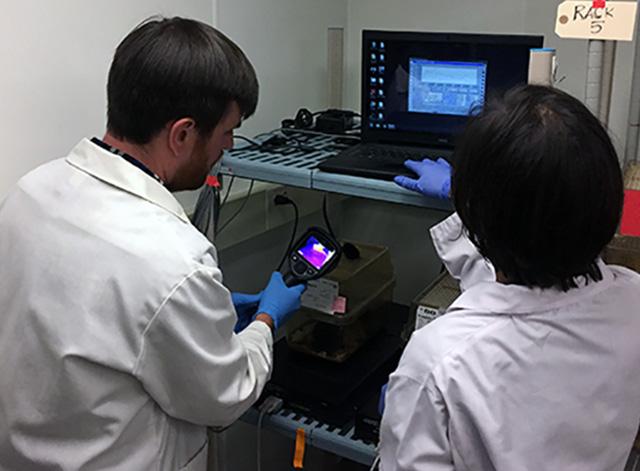
Brain circuit triggers hot flashes in males and females
Sex hormone-sensitive brain cells provoke sudden, intense feelings of heat during menopause or prostate cancer therapy, and could be a treatment target.Media Contact: Cell Press: Joseph Caputo, 617.335,6270, jcaputo@cell.com
UW Medicine: Brian Donohue, 206.543.7856, bdonohue@uw.edu

Activation of a single type of neuron appears to trigger hot-flash-like symptoms in mice. In the July 10 issue of Cell Reports, researchers show that so-called Kiss1 neurons in the hypothalamus may be the link between sex hormone fluctuations and the hot flashes that affect many menopausal women. These cells project to a brain region controlling body temperature.
“Because these neurons are conserved in humans, and by all accounts perform similar functions in humans as they do in mice, this gives us specific evidence about how hot flashes are likely to be generated,” said co-author Christopher Johnson, a neuroscience graduate student at the University of Washington School of Medicine in Seattle
In people, hot flashes can occur in both men and women in response to rapid decreases in sex hormone levels. Symptoms can include a sensation of heat in the face and neck, and sweating, followed by chills. They can sometimes disturb sleep. One-fifth of women never get hot flashes during menopause. Those who do, tend to have them on and off, on average, for about seven years.
“Hormonal states such as menopause and prostate cancer treatment that give rise to hot flash susceptibility are very complex,” said co-author Stephanie Padilla, a postdoctoral researcher in biochemistry at the University of Washington School of Medicine. “That we were able to reliably generate such a robust physiological response by manipulating one population of sex-hormone-sensitive cells in a specific region of the brain validated a decade of research by groups investigating this phenomenon.”
The most prevalent treatment in the United States for hot flashes in women is estrogen replacement therapy, which has been tied to an increased risk of stroke, blood clots and heart attack. This new research identifies a neurological target for drugs that might prevent hot flashes from occurring. The findings also support an approach used in an ongoing clinical trial in Europe to reduce the symptoms of hot flashes.
Johnson, Padilla, and their colleagues conducted their study in the laboratory of UW Medicine biochemist Richard Palmiter, a Howard Hughes Medical Institute investigator. They genetically engineered mice and viruses to manipulate Kiss1-expressing neurons. Activating Kiss1 neurons initiated a fast boost in skin temperature followed by a drop in core-body temperature. The same symptoms occurred in male and female mice. Removing the female mouse’s ovaries exacerbated the effect.
The researchers speculated that in females, carrying offspring to term may require an ability to modulate body temperature that is related to, but separate from, circadian body temperature.
Whether the Kiss1 circuit is an independent pathway linking body temperature to the reproductive system or just one facet of a larger network of temperature-regulating circuits remains to be established, the researchers wrote in their paper.
“While hot flashes in humans tend to be accompanied by emotional or psychological distress that is difficult to mimic in a mouse model, these results give us an opportunity to consider how the neurons we studied may tie into the systems that keep our bodies functioning normally even outside of the altered hormonal states that accompany hot flashes,” Johnson said.
The National Institutes of Health supported this research.
For details about UW Medicine, please visit https://uwmedicine.org/about.